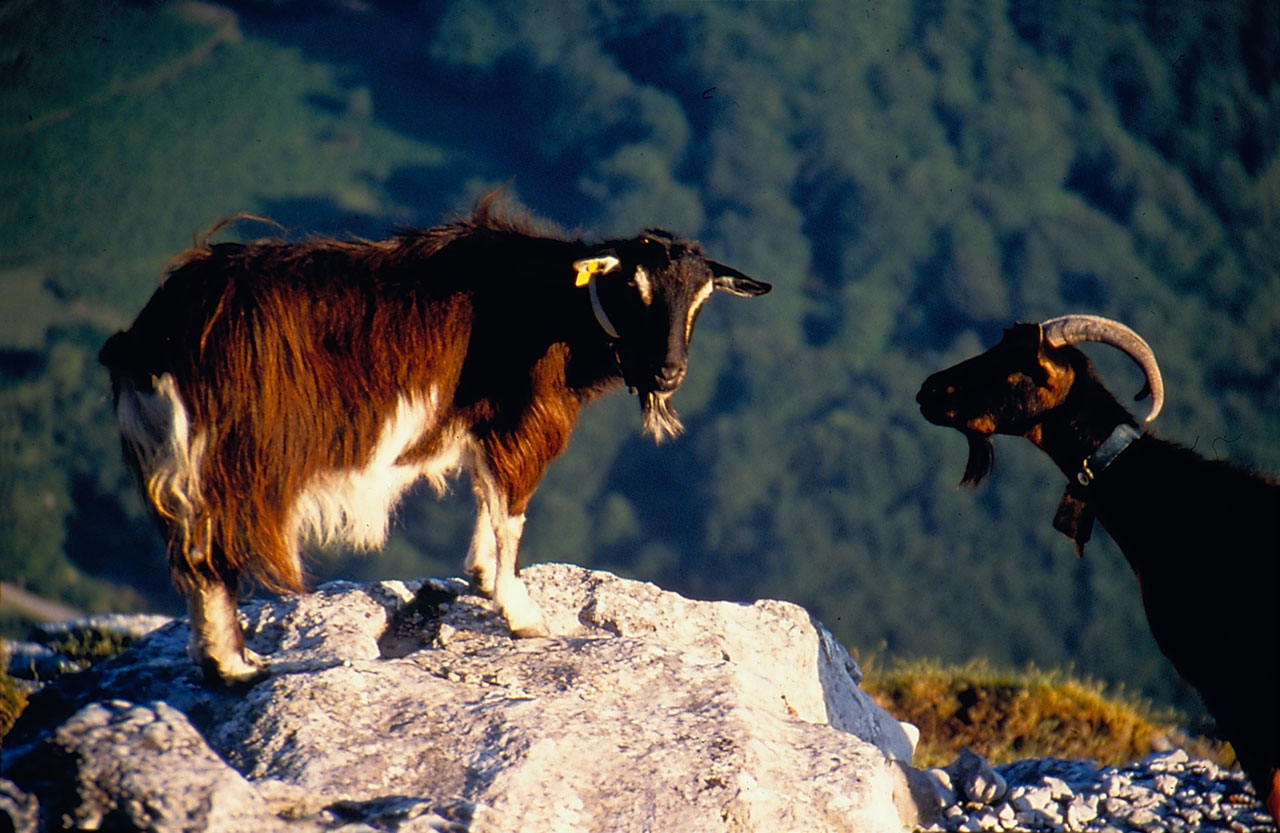Diferencia entre revisiones de «Ganaderia y pastoreo en vasconia/en»
De Atlas Etnográfico de Vasconia
| Línea 6: | Línea 6: | ||
==[landing]== | ==[landing]== | ||
| − | ===[ganaderia| | + | ===[ganaderia|Livestock Farming and Shepherding in the Basque Country|/atlas/ganaderia.png|Animal husbandry as a way of life rather than an economic opportunity: aspects related to domestic animals and the human-animal bond.]=== |
| − | ====[Ganaderia_y_pastoreo_en_vasconia | | + | ====[Ganaderia_y_pastoreo_en_vasconia | Livestock Farming and Shepherding in the Basque Country]==== |
====[/atlas/ganaderia/Subida-a-los-pastos-del-Gorbeia-2006.jpg|On the move to the summer pastures in Gorbeia, 2006. Source: Antxon Aguirre, Etniker Euskalerria Groups.|Traditional shepherding and free-range livestock husbandry have prevailed on regions where these three requisites are satisfied: communal land, open-access rights, and free movibility for herds.|]==== | ====[/atlas/ganaderia/Subida-a-los-pastos-del-Gorbeia-2006.jpg|On the move to the summer pastures in Gorbeia, 2006. Source: Antxon Aguirre, Etniker Euskalerria Groups.|Traditional shepherding and free-range livestock husbandry have prevailed on regions where these three requisites are satisfied: communal land, open-access rights, and free movibility for herds.|]==== | ||
====[/atlas/ganaderia/Ovejas-latxas-de-cara-negra-Abadino.jpg|Dark-faced ''latxa'' sheep. Abadiño (B). Source: Rosa M.ª Ardanza, Etniker Euskalerria Groups.|The permanence of shepherding in the mountains of the Basque Country over centuries may help understand the fact that denominations given to diverse species of livestock, as well as to the implements used, form a distinguishing lexical corpus, independent from Indoeuropean languages.|]==== | ====[/atlas/ganaderia/Ovejas-latxas-de-cara-negra-Abadino.jpg|Dark-faced ''latxa'' sheep. Abadiño (B). Source: Rosa M.ª Ardanza, Etniker Euskalerria Groups.|The permanence of shepherding in the mountains of the Basque Country over centuries may help understand the fact that denominations given to diverse species of livestock, as well as to the implements used, form a distinguishing lexical corpus, independent from Indoeuropean languages.|]==== | ||
Revisión del 13:19 27 ene 2020

Livestock Farming and Shepherding in the Basque Country
Animal husbandry as a way of life rather than an economic opportunity: aspects related to domestic animals and the human-animal bond.
Dark-faced latxa sheep. Abadiño (B). Source: Rosa M.ª Ardanza, Etniker Euskalerria Groups.



